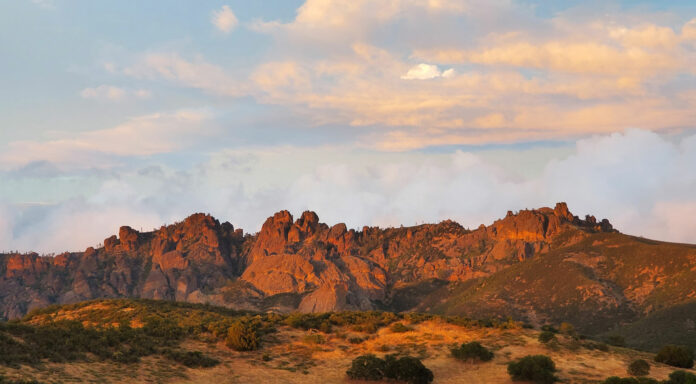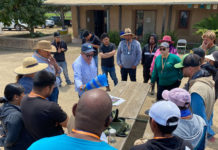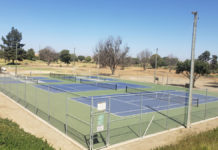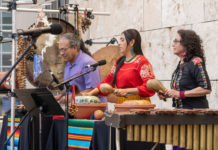
Expansive vistas, serene lakes, abundant wildlife and good old fresh air — what’s not to love about national parks? So many Americans have taken refuge in parks during the pandemic that 15 of them set recreation visitation records in 2020. All of the parks have adjusted their operations as a result of COVID-19, and with social-distancing protocols still in place almost a year later, there could be competition for campsites, ferry rides, programs and, in some cases, day passes at the most popular parks.
“This is the year to be prepared,” said John Kelly, a management assistant at Acadia National Park in Maine. “Visitors really need to plan ahead and be extra thoughtful and ready for things to be different.” All parks are required to abide by President Joe Biden’s executive order mandating mask-wearing in federal buildings and on federal lands when social distancing is not possible — “even in parking lots, on trails and on mountaintops where others are present,” Kelly said.
With some planning and creativity, however, you can get a healthy dose of nature while avoiding crowds and hassle. And while there are only 63 proper national parks, the Park Service manages another 360 national monuments, recreation areas, seashores and other sites that offer unique attractions and fewer crowds.
“So many people, I think most of us, are feeling so fatigued and downtrodden and exhausted by the pandemic,” said Emily Pennington, a national parks columnist for Outside magazine, who visited all of the country’s national parks in 2020. “Parks are not only relatively safe places but also places to rekindle that sense of wonder.”
Here are some ways to enjoy the great outdoors safely and conveniently in the warmer months ahead.
Plan even farther in advance.
At iconic national parks, some lodging, transportation and program options are booking out much earlier than they would in a typical year because more people are traveling domestically and fewer slots are available. Parks that have limited transportation options are especially at risk of booking up.
“You should be planning this month or you may not be able to get transportation to the island,” said Chris Amidon, supervisory park ranger for Isle Royale National Park, an island in Lake Superior that is reachable only by boat or plane.
It’s wise to check if land-bound parks have restrictions too. Acadia, for example, is requiring advance reservations to drive the Cadillac Summit Road this year. Many parks are also encouraging visitors to pay entrance fees online ahead of time through recreation.gov, and some have required reservations for day use in the past. Having passes and maps printed out can mean that you don’t have to wait in lines to pay fees.
Get informed.
In many parks, rangers are still currently deciding which of their facilities to open to visitors this summer and at what capacity. Reservations are opening on a rolling basis, and the most immediate way to keep abreast of changes and opportunities to book, other than visiting park websites, is to follow the national parks on their Facebook, Twitter or Instagram accounts. National parks do not keep tabs on shifting state restrictions on travel, so if you are planning to leave your state, check your destination state’s public health website to make sure you meet their requirements before departure.
Secure your campsite.
For campers who don’t like to reserve ahead of time, parks typically set aside a certain number of campsites to be staked out on a first-come, first-serve basis. But some campgrounds, such as Jenny Lake in Grand Teton National Park, Wyoming, filled up as early as 6 a.m. last summer. If you are keen on camping, private campgrounds, such as those run by the company KOA, in nearby towns are more likely to have openings.
Hipcamp is a website and app used for finding both established campgrounds and private hosts who allow camping on their land, in a similar way to Airbnb. Also consider asking park staff about dispersed or primitive camping areas on adjacent Forest Service, Bureau of Land Management or other public lands. These remote sites typically do not have amenities like bathrooms and picnic tables but make up for it in quietude. Some road atlases, such as National Geographic’s Adventure Edition, feature icons where public camping is allowed and apps like The Dyrt, WikiCamps and Campendium can help locate campsites.
Book a lodge or hotel.
Hotels within parks can be even trickier to book than campsites. For some sought-after lodges like Phantom Ranch, which sits at the bottom of the Grand Canyon, online lotteries for reservations are held up to 14 months in advance. (But last-minute spots do open up for those who are flexible with their dates.) If you are keen on an actual bed and four walls and don’t mind driving to the park each day, gateway towns such as West Yellowstone, Montana, Jackson, Wyoming, Visalia, California, and Durango, Colorado, offer a greater selection of lodging options and better value.
Go with an insider.
Guide services know to secure campsites and book lodging as soon as they become available and often have openings on their trips long after the public sites fill. This year, REI Experiences is offering trips to 25 national parks. To enable social distancing, the company is limiting group sizes to eight and offering private trips for as few as four people for the price of a regular group trip. Sierra Club Outings also runs trips in national parks and has updated their cancellation policies to be more flexible during the pandemic.
Both guide services, along with the American Hiking Society, offer organized volunteer trips for a fee. These allow visitors the chance to give back, work alongside rangers and see different views of these storied American landscapes. For those who would prefer to volunteer independently and without a fee, opportunities to serve on federal lands are listed at volunteer.gov.
Get off the tourist trail.
“A lot of people get hung up on having to see the highlights, but there are a lot of ways to experience the parks,” said Bill Sycalik, a management consultant from Denver who is running a marathon in each of the parks. (He has eight to go.)
Sycalik has noticed that crowds typically thin to almost zero about 2 miles from the trailhead. “It doesn’t take much to experience solitude, but you do have to make a little bit of an effort.” Some parks limit access to certain sensitive or exceptional areas through permit systems and lotteries. You can find out about these special excursions and apply for permits and lotteries through recreation.gov.
Time it right.
Visiting parks early in the morning or after dark can lead to some of the most memorable experiences. “If you can manage to grit your teeth and set an alarm and get up early, you generally get to enjoy the parks’ more famous touristed areas with almost zero crowds,” said Pennington of Outside magazine. “I woke up at 5 in the morning, drove into Yellowstone and saw Old Faithful at sunrise.”
At dusk and dawn, wildlife is generally more active and can be spotted more easily. In addition, more than two dozen national parks and other National Park Service sites have been designated as dark-sky parks, which means they have exceptional stargazing opportunities. Some offer night programs like astronomy talks or owl counts. Others have unique wonders that can only be seen in the evenings, like Yosemite’s moonbows, which are rainbows that form in the mist of waterfalls on full-moon nights.
Bring the kids.
Parks are brimming with opportunities for children to learn and explore. For parents, the key is adjusting your expectations. “We want kids to have good experiences in national parks, so make sure you’re realistic,” said Frank Barrows, a program manager of visitor experience and community engagement for the National Park Service. “Getting to that scenic view might not be the goal for your child. They might have more fun engaging with what they’re seeing around them.”
Barrows recommends making a game of counting bugs, birds or rocks, or stoking kids’ creative instincts by making drawings, writing poems or shooting a TikTok video about their experience. Bring a magnifying glass to view wildlife and plants, look under rocks in streams to discover critters, climb on boulders or look for animal signs like tracks, scat or feathers.
“The key is to listen, pay attention and watch the ways they engage, then facilitate the experience based on that,” he said.
Take the scenic route.
The beauty of the national parks usually doesn’t end abruptly at park boundaries. Often the areas adjacent to them are equally spectacular and see far fewer visitors. For instance, many travelers see Utah’s Bryce Canyon and Zion national parks, then take larger and more direct thoroughfares to Capitol Reef National Park.
But Highway 12, a slower, windier alternate route, snakes through astonishing crimson, pink and tawny canyons, replete with a waterfall or two. With spiky peaks, warbling cascades and neck-high wildflowers, the west side of the Tetons, near Driggs, Idaho, is a dead ringer for Grand Teton National Park and sees a fraction of the visitors. Many state parks also have attractions that rival their more famous neighbors, such as Goblin Valley State Park, in Utah, where the multicolored alien-like hoodoos rival those of nearby Canyonlands.
Copyright 2021 The New York Times Company














